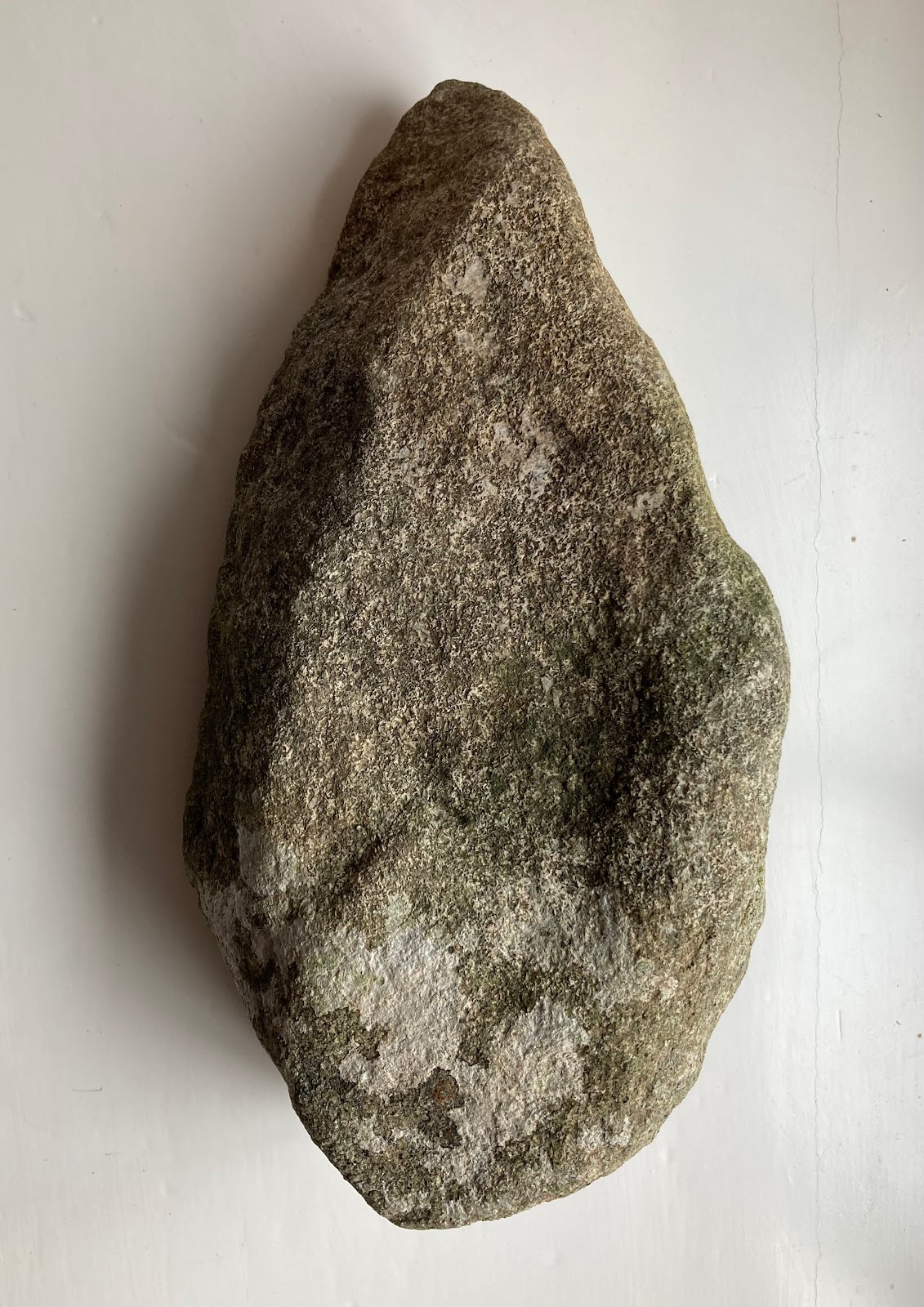I was mending one of my stone walls yesterday when I happened upon a rather fine small boulder which was virtually a mirror image of the famous "Newall Boulder" which sits in Salisbury Museum. It's almost spooky -- but this one has not had chunks knocked off it, and it has not lost large slices to geological sampling.....
This one is made of dolerite, not rhyolite, and its dimensions are c 27 cm x 15 cm x 10 cm. It weighs 5 kg, which is approx what the Newall Boulder will have weighed before human beings started messing about with it. It has a weathered surface, with some facets more weathered than others. It has 8 main facets and 4 smaller ones -- some flat and others curved or undulating, and there are variations in surface micro-morphology as well. There are no striations (dolerite surfaces seldom hold striations because of the coarse graining) but there are several small but distinct pressure fractures. There are no calcium carbonate concretions or nodules (this is an acid water environment), but parts of the boulder surface are covered with patches of whitish lichen.
I am in do doubt at all that this is a glacially transported clast, found in Devensian glacial deposits in the immediate vicinity and used in the construction of my stone wall. We'll call it the "Trefelin Boulder". It has probably travelled 2 km at the most, from outcrops to the N or NW. But boulders like this can be carried hundreds of kilometres -- sometimes with ongoing modification but sometimes unchanged after carriage in a "protective environment." The interesting thing is that each facet has a different micro-morphology and therefore a different history.
I will describe this boulder in more detail in another post, which I hope will be instructive for those who think that the Newall Boulder is just the broken off tip of a monolith transported by our heroic Neolithic ancestors from the so-called quarry at Craig Rhosyfelin........




No comments:
Post a Comment
Please leave your message here